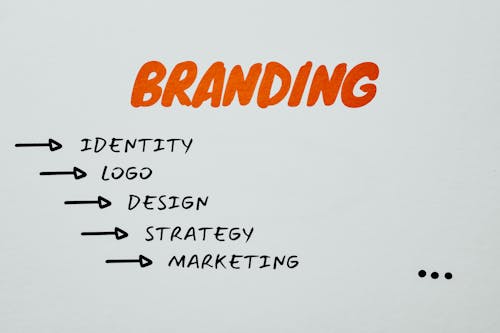7 Reasons Captivating Typography is Essential for Small Business Websites
As a small business owner, you know that your website is more than just a digital storefront—it’s often the first impression potential customers have of your brand. One critical aspect that’s sometimes overlooked in web design is typography. Choosing the right fonts and creating a compelling typographic layout can significantly impact how visitors perceive your business. From readability and user experience to brand identity and conversion rates, captivating typography plays a vital role in making your website not just visually appealing, but also effective.

In this blog post, I’ll walk you through 7 reasons why captivating typography is essential for small business websites, and how it can help your business stand out in today’s competitive digital landscape. Whether you’re designing your site from scratch or looking to improve an existing one, understanding the power of typography can elevate your online presence and contribute to your overall business success.
1. Enhances Readability and Accessibility
One of the primary purposes of typography is to ensure that your content is easy to read and understand. If your website’s text is hard to read due to poor font choices, small sizes, or inadequate spacing, visitors are likely to leave your site without engaging further. Good typography enhances readability and accessibility, making it easier for users to consume your content.
Key Factors in Readability:
- Font Size and Line Spacing: Choosing an appropriate font size and line spacing is crucial. According to the American Institute of Graphic Arts (AIGA), a line spacing of 120-145% of the font size improves readability. This ensures that text doesn’t appear too cramped or too spread out, making it comfortable for users to read.
- Contrast: High contrast between text and background is essential for readability. Avoid light text on light backgrounds or dark text on dark backgrounds. Instead, use combinations like black text on a white background or white text on a dark background.
- Font Selection: Opt for fonts that are easy to read on both desktop and mobile devices. Serif fonts, such as Times New Roman, are generally used for printed content, while sans-serif fonts like Arial or Helvetica are preferred for digital use because of their clean and modern look.
Example: Imagine a small local bakery that has a beautifully designed website with stunning photos of their pastries. However, the text is difficult to read due to a fancy cursive font and small size. Visitors may appreciate the visuals but will struggle to find information about menu items or store hours, leading to frustration and a potential loss of business. By switching to a clear, legible font and increasing the size, they can create a more welcoming experience for visitors.
2. Establishes Brand Identity and Consistency
Typography is a powerful tool for establishing and reinforcing your brand identity. The fonts you choose convey the personality and values of your business. For example, a law firm might use a classic, serif font to convey professionalism and trustworthiness, while a creative agency might opt for a bold, modern typeface to showcase innovation and creativity.

Creating a Cohesive Brand Identity:
- Font Pairing: Using a consistent set of fonts across your website and marketing materials creates a cohesive look. Typically, one font is used for headings and another for body text. Tools like Google Fonts offer a wide variety of free fonts that you can pair effectively.
- Consistency Across Platforms: Ensure that the same fonts are used on your website, social media, and printed materials to create a unified brand experience. This consistency helps build brand recognition and trust among your audience.
- Emotional Impact: Different fonts evoke different emotions. Serif fonts can feel traditional and trustworthy, while sans-serif fonts are seen as modern and clean. Script fonts add a touch of elegance and creativity. Choose fonts that align with the message and tone you want to convey.
Example: A boutique clothing store targeting young, fashion-forward customers might use a sleek, minimalist font to reflect its modern, trendy image. By using the same typography on their website, social media, and promotional materials, they create a consistent and recognizable brand presence.
3. Improves User Experience and Engagement
Typography is not just about aesthetics; it also plays a crucial role in user experience (UX). Good typography can guide users through your website, highlight important information, and make it easier for them to take desired actions, such as filling out a contact form or making a purchase.
How Typography Enhances UX:
- Hierarchy and Structure: Use different font sizes, weights, and styles to create a clear hierarchy of information. Headings, subheadings, and body text should be distinct, guiding users through your content in a logical manner. This makes it easier for them to find the information they’re looking for.
- Call-to-Action (CTA): Effective use of typography can make your CTAs stand out. Bold fonts, contrasting colors, and strategic placement draw attention to buttons and links, encouraging users to take action. According to a study by Nielsen Norman Group, clear and visually distinct CTAs improve conversion rates.
- Scannability: Many users don’t read web content word-for-word; they scan for key points. Break up large blocks of text with headings, bullet points, and short paragraphs to make your content more digestible. This helps retain visitors and keeps them engaged with your site.
Example: A small consulting firm that uses clear, bold headings and well-structured text on its website can effectively communicate its services and expertise. Visitors can quickly find the information they need, such as pricing and contact details, increasing the likelihood of inquiries and conversions.
4. Increases Conversion Rates
The ultimate goal of any business website is to convert visitors into customers, whether that means making a purchase, signing up for a newsletter, or booking a consultation. Typography can have a significant impact on these conversions.
How Typography Affects Conversions:
- First Impressions: According to a study by the Missouri University of Science and Technology, visitors form their first impression of a website in just 2.6 seconds. Typography plays a key role in these initial judgments. Clean, professional fonts can instill confidence, while poor font choices can make a site look untrustworthy.
- Emphasizing Key Messages: Use typography to highlight key messages and value propositions. For example, a bold, attention-grabbing font for “Free Consultation” can make this offer stand out, prompting more users to take advantage of it.
- Reducing Cognitive Load: Simple, readable typography reduces the cognitive load on visitors, making it easier for them to process information and make decisions. This leads to a smoother user journey and higher conversion rates.
Example: A local spa that emphasizes “Book Now” with a prominent, bold font on its homepage can see an increase in appointments compared to using a smaller, less noticeable font. This simple change makes the CTA more compelling and encourages immediate action.
5. Supports SEO and Search Engine Rankings
While typography itself is not a direct ranking factor for search engines, it can have a significant impact on SEO. Good typography improves user experience, reduces bounce rates, and increases time spent on site—all factors that search engines consider when ranking websites.

Typography and SEO:
- Readability: Search engines like Google reward websites that provide a good user experience. If your content is hard to read, visitors are likely to leave quickly, increasing your bounce rate. High bounce rates can negatively impact your SEO rankings.
- Mobile Friendliness: With more people browsing the web on mobile devices, ensuring that your typography is responsive and easy to read on smaller screens is crucial. Google has shifted to mobile-first indexing, so sites that don’t provide a good mobile experience may be penalized in search rankings.
- Content Engagement: Engaging content that keeps visitors on your site longer can improve your SEO. Well-structured typography makes it easier for users to read and engage with your content, increasing the likelihood that they will spend more time on your site.
Example: A small business blog with well-organized, easy-to-read text will likely rank higher in search results compared to a similar blog with poor typography. This is because visitors are more likely to stay on the site longer, reducing bounce rates and signaling to search engines that the content is valuable.
6. Enhances Professionalism and Credibility
For small businesses, establishing credibility is crucial. The typography you choose can either enhance or detract from your professional image. Poor font choices, inconsistent styling, or amateurish designs can make your business appear unprofessional.
How Typography Affects Credibility:
- Professional Fonts: Using professional, well-designed fonts conveys that you take your business seriously. Avoid overly decorative or playful fonts that might not align with your brand’s tone and message.
- Consistency: Consistent use of typography across your website and marketing materials builds trust. Inconsistencies, such as using different fonts on different pages or changing font sizes erratically, can confuse visitors and make your brand seem disorganized.
- Alignment with Industry Standards: Certain industries have typographic standards that can influence perceptions of professionalism. For example, law firms and financial services often use classic serif fonts, while tech companies might opt for modern, sans-serif fonts.
Example: A small financial advisory firm using clean, professional fonts and consistent typography across its website and printed materials can establish itself as a credible and trustworthy business. This consistency reassures potential clients that the firm is reliable and detail-oriented.
7. Facilitates Emotional Connection and Storytelling
Typography is not just about conveying information; it’s also a powerful tool for storytelling. The right fonts can evoke emotions, create connections with your audience, and help convey your brand’s story more effectively. When used thoughtfully, typography can influence how your message is received and remembered by your visitors.
Typography and Emotional Impact:
- Setting the Mood: Different fonts evoke different feelings. For instance, a hand-drawn, playful font can make a website feel casual and approachable, perfect for a children’s toy store or a creative art studio. On the other hand, a modern, clean typeface can create a sense of sophistication and innovation, which is ideal for tech startups or design firms.
- Highlighting Emotions in Content: Using variations in font styles, sizes, and colors can emphasize the emotional tone of your content. For example, bold fonts can convey strength and importance, while italics can add a personal, conversational touch. This layering of text styles helps in guiding the reader’s emotional journey through your content.
- Storytelling through Design: Typography can be used to guide the reader’s eye and highlight the narrative flow of your content. When combined with images and other design elements, the right typography can bring your brand’s story to life. For instance, a charity organization might use a gentle, humanistic font in its storytelling to evoke empathy and support from its audience.
- Creating a Unique Voice: The fonts you choose contribute to your brand’s unique voice. Just like tone and language, typography should align with your brand’s personality. Are you fun and quirky or professional and authoritative? Your choice of typography can make a lasting impression on your audience and set the tone for how they perceive your brand.
Example: A local wellness center uses a combination of soft, rounded fonts and earthy colors throughout its website and marketing materials. This typographic choice reflects the calming and welcoming atmosphere of the center, helping to create an emotional connection with potential clients looking for a place to relax and rejuvenate.
How to Choose the Right Typography for Your Small Business Website
Now that we’ve covered the importance of captivating typography and its various benefits, let’s dive into some practical tips on how to choose the right typography for your small business website.

1. Understand Your Brand Personality
The first step in choosing the right typography is to understand your brand personality. Ask yourself what emotions you want to evoke in your audience and how you want your business to be perceived. Are you a fun and creative brand, or are you more traditional and professional? Your typography should reflect these characteristics.
- Brand Adjectives Exercise: List 5-10 adjectives that describe your brand. For example, if you run a boutique clothing store, your adjectives might include stylish, modern, and approachable. Use these adjectives to guide your font selection process.
- Mood Boards: Create a mood board that includes colors, images, and fonts that represent your brand. This visual representation can help you narrow down your font choices and ensure that they align with your brand’s overall aesthetic.
2. Consider Readability and Functionality
No matter how beautiful a font may be, it’s useless if your audience can’t read it. Always prioritize readability and functionality when choosing fonts for your website.
- Test Different Font Sizes: Test your chosen fonts at various sizes to ensure they’re legible on different devices, including desktops, tablets, and smartphones.
- Limit Font Styles: It’s best to stick to two or three font styles—one for headings, one for body text, and possibly one for accents like quotes or calls to action. Using too many fonts can create visual clutter and confuse visitors.
- Avoid Overly Decorative Fonts for Body Text: While decorative fonts can be great for headings or logos, they should be avoided for body text, as they can be difficult to read in large quantities.
3. Match Fonts to Your Industry and Audience
Your choice of typography should also reflect the norms of your industry and the preferences of your target audience.
- Industry Standards: Research your industry to see what typefaces are commonly used. For example, serif fonts are often associated with law firms and financial institutions, while sans-serif fonts are popular in tech and design industries.
- Audience Preferences: Consider the preferences of your target audience. A younger, more tech-savvy audience might appreciate modern, minimalist fonts, while an older demographic might prefer traditional, easy-to-read typefaces.
4. Use Typography to Create Visual Hierarchy
Typography plays a key role in establishing visual hierarchy on your website, helping guide visitors through your content in a logical and engaging way.
- Headings and Subheadings: Use larger, bolder fonts for headings and subheadings to break up content and make it easier to scan. This helps users find the information they’re looking for more quickly.
- Text Emphasis: Use bold, italic, or colored text sparingly to highlight important information. This technique draws attention to key points without overwhelming the reader.
- Whitespace and Margins: Don’t be afraid to use whitespace around your text. Adequate spacing helps prevent your content from feeling cramped and makes it easier to read.
5. Leverage Tools and Resources
There are many tools and resources available to help you choose the right typography for your website.
- Google Fonts: Google Fonts offers a vast library of free, high-quality fonts that you can easily integrate into your website. Each font includes detailed information about its characteristics and optimal use cases.
- Font Pairing Tools: Websites like FontPair and Canva’s Font Combinations tool can help you find complementary font pairs that work well together.
- Typography Plugins: If you’re using a platform like WordPress, consider installing typography plugins that give you more control over font customization and styling options.
The Future of Typography in Web Design
As web design trends continue to evolve, typography will remain a crucial element in creating compelling and effective websites. Here are a few trends to keep an eye on:

1. Variable Fonts
Variable fonts allow for more flexibility and creativity in web design. A single variable font file can include multiple styles, weights, and widths, reducing the need for multiple font files and improving page load speeds. This technology offers designers more creative freedom while maintaining performance and accessibility.
2. Bold and Expressive Fonts
As brands look to stand out in an increasingly crowded digital space, bold and expressive fonts are becoming more popular. These fonts can make a statement and convey strong brand messages, particularly when used sparingly and strategically.
3. Animated and Interactive Typography
Advancements in CSS and JavaScript have made it easier to incorporate animated and interactive typography into websites. These dynamic text elements can grab attention and enhance user engagement, making them an exciting trend to watch.
4. Minimalist Typography
Minimalist typography focuses on simplicity and clarity. Clean lines, ample whitespace, and straightforward font choices create a modern and sophisticated look that is particularly effective for brands that value elegance and functionality.
Conclusion
Captivating typography is more than just an aesthetic choice; it’s a strategic element that can significantly impact your small business website’s effectiveness. From enhancing readability and establishing brand identity to improving user experience and driving conversions, the right typography can make a world of difference.
As a small business owner, it’s essential to understand the power of typography and how to use it to your advantage. Whether you’re building a new website or looking to refresh an existing one, investing time and thought into your typographic choices can help you create a site that not only looks great but also supports your business goals.
Don’t overlook the impact that well-chosen fonts and thoughtful design can have on your business. With the right approach, captivating typography can elevate your website, resonate with your audience, and set your business apart from the competition. Contact us today to discuss how we can elevate your website’s typography and create a captivating online presence for your business!
Sources:
- American Institute of Graphic Arts (AIGA). (n.d.). Typography Guidelines for Designers. AIGA.
- Nielsen Norman Group. (n.d.). The Role of Typography in UX Design. NNG.
- Missouri University of Science and Technology. (n.d.). The Impact of First Impressions on Website Design. Missouri S&T.
- BrightLocal. (2021). Local Consumer Review Survey. BrightLocal.
- Google Fonts. (n.d.). Typography Resources for Web Design. Google Fonts.
- HubSpot. (2022). The Importance of Branding in Business. HubSpot.
